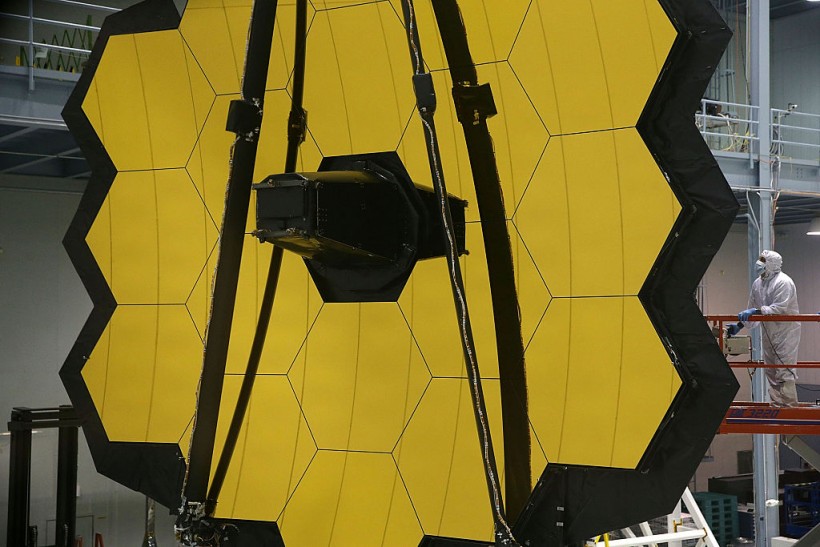
(Photo : Alex Wong/Getty Images)
NASA's James Webb Space Telescope observed an exoplanet that is located in the "habitable" zone that could be capable of supporting life.
NASA's James Webb Space Telescope made another shocking discovery with a planet located in a "habitable" zone, finding that it could support life.
The cosmic object could have water flowing on its surface, as suggested by new evidence taken by Webb, as it lies in an area roughly 120 light-years away from our planet. The colossal planet was investigated using the space-based observatory, one of the most advanced astronomy instruments currently in operation.
James Webb Observes Exoplanet in Habitable Zone
Astronomers discovered that the planet, known as K2-18b, has the potential to possess some key features of a planet that could support bodies of water and even life. The exoplanet is closely orbiting the cool dwarf star K2-18.
The cosmic object lies within its star's habitable zone, which is also called the Goldilocks zone. It is roughly 8.6 times bigger than our planet. Scientists who analyzed Webb's observations discovered that the planet has abundant methane and carbon dioxide in its atmosphere, as per CNN.
The fact that astronomers were able to detect these carbon-bearing molecules, along with a scarcity of ammonia, could indicate that the planet has an atmosphere rich with hydrogen surrounding an ocean world.
Carbon is what is considered to be one of the building blocks of life forms on Earth. The Hubble Space Telescope initially discovered evidence of water vapor in the exoplanet's atmosphere. This finding was described in a study in September 2019 and was able to support scientists in focusing on K2-18b for further analysis.
The Webb telescope, capable of detecting invisible infrared light to the human eye, has been searching for exactly what elements are found in the exoplanet's atmosphere. The latest observations of the cosmic object also suggest that it has a very special molecule, dimethyl sulfide.
Read Also: Atlas 5 Rocket Blasts National Reconnaissance Office Satellites Into Space To Monitor GEO
Interesting Discovery
This molecule is primarily produced by phytoplankton, microscopic plant-like organisms found in salty seas and freshwater. Webb's findings are part of a new investigation into the exoplanet that is located in the constellation Leo, according to Mashable.
The types of planets that have a hydrogen-rich atmosphere hanging over an ocean are believed to exist somewhere in the universe. They are generally called Hycean, which combines the words hydrogen and ocean.
In a statement, an astronomer, Nikku Madhusudhan, said in a University of Cambridge video that dimethyl sulfide molecules are unique to life on Earth. He added that there was no way that this molecule was produced on our planet.
On Monday, the university said that the recent findings provide a glimpse into a planet unlike anything else in our Solar System. It notes that the discovery raises interesting prospects about potentially habitable worlds located elsewhere in the universe.
While the recent findings look promising, the scientists said they did not necessarily mean that the planet can support life. The sheer size of the planet means that its interior could contain a large mantle of high-pressure ice, similar to Neptune, said the Washington Post.
Related Article: Longest-Staying Astronaut: Frank Rubio Breaks US Record for Longest Spaceflight








